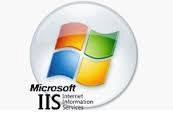What is Web Server and how it works?

Web server is a program that uses HTTP to serve files that create web pages to users in response to their requests, which are forwarded by their computers HTTP connection.
Any server that delivers an XML document to another device can be a Web server. A better definition might be that a Web server is an Internet server that responds to HTTP requests to deliver content and services.
"Web server" can refer to hardware or software, or both of them working together.
- On the hardware side, a web server is a computer that stores a website's component files (e.g. HTML documents, images, CSS stylesheets, and JavaScript files) and delivers them to the end-user's device. It is connected to the Internet and can be accessed through a domain name like
mozilla.org. - On the software side, a web server includes several parts that control how web users access hosted files, at minimum an HTTP server. An HTTP server is a piece of software that understands URLs (web addresses) and HTTP (the protocol your browser uses to view webpages).
At the most basic level, whenever a browser needs a file hosted on a web server, the browser requests the file via HTTP. When the request reaches the correct web server (hardware), the HTTP server (software) sends the requested document back, also through HTTP.
To publish a website, you need either a static or a dynamic web server.
A static web server, or stack, consists of a computer (hardware) with an HTTP server (software). We call it "static" because the server sends its hosted files "as-is" to your browser.
A dynamic web server consists of a static web server plus extra software, most commonly an application server and a database. We call it "dynamic" because the application server updates the hosted files before sending them to your browser via the HTTP server.
For example, to produce the final webpages you see in the browser, the application server might fill an HTML template with contents from a database. Sites like MDN or Wikipedia have many thousands of webpages, but they aren't real HTML documents, only a few HTML templates and a giant database. This setup makes it easier and quicker to maintain and deliver the content.
Also, web server enables the hosting providers to manage multiple domains(users) on a single server.

A web host is a company that leases out space on a cluster of servers to empower people to serve their own content & webpages.
Different Types of Web Servers
There are different types of web servers available in open market. The most popular web servers are Apache, IIS, Nginx and LiteSpeed.
Apache Web Server

Apache is the most popular web server in the world developed by the Apache Software Foundation. Apache is an open source software and can be installed on almost all operating systems including Linux, Unix, Windows, FreeBSD, Mac OS X and more. About 60% of machines run on Apache Web Server.
An Apache server can be customized easily as it contains a modular structure. It is also an open source which means that you can add your own modules to the server when to require and make modifications that suit your specific needs.
It is more stable than any other web servers and is easier to solve administrative issues. It can be install on multiple platforms successfully.
Recent Apache releases provide you the feasibility of handling more requests when you compare to its earlier versions.
IIS Web Server

IIS is a Microsoft product. IIS server has all the features just like Apache. But it is not an open source and more over personal modules cannot be added easily and modification becomes a little difficult job.
Microsoft developed, maintains it, thus works with all the Windows operating system platforms. Also, they had good customer support if it had any issues.
Nginx Web Server

Nginx is another free open source web server, it includes IMAP/POP3 proxy server. Nginx is known for its high performance, stability, simple configuration and low resource usage.
This web server doesn’t use threads to handle requests rather a much more scalable event-driven architecture which uses small and predictable amounts of memory under load. It is getting popular in the recent times and it is hosting about 7.5% of all domains worldwide.
LightSpeed Web Server
LiteSpeed (LSWS) is a high-performance Apache drop-in replacement. LSWS is the 4th most popular web server on the internet and it is a commercial web server.
Upgrading your web server to LiteSpeed will improve your performance and lower operating costs.
This is compatible with most common Apache features, including mod_rewrite, .htaccess, and mod_security. LSWS can load Apache configuration files directly and works as a drop-in replacement for Apache with hosting control panels — replacing Apache in less than 15 minutes with zero downtime.
Unlike other front-end proxy solutions, LSWS replaces all Apache functions, simplifying use and making the transition from Apache smooth and easy. Most of the hosting companies were using LSWS in recent times.
No comments:
Post a Comment